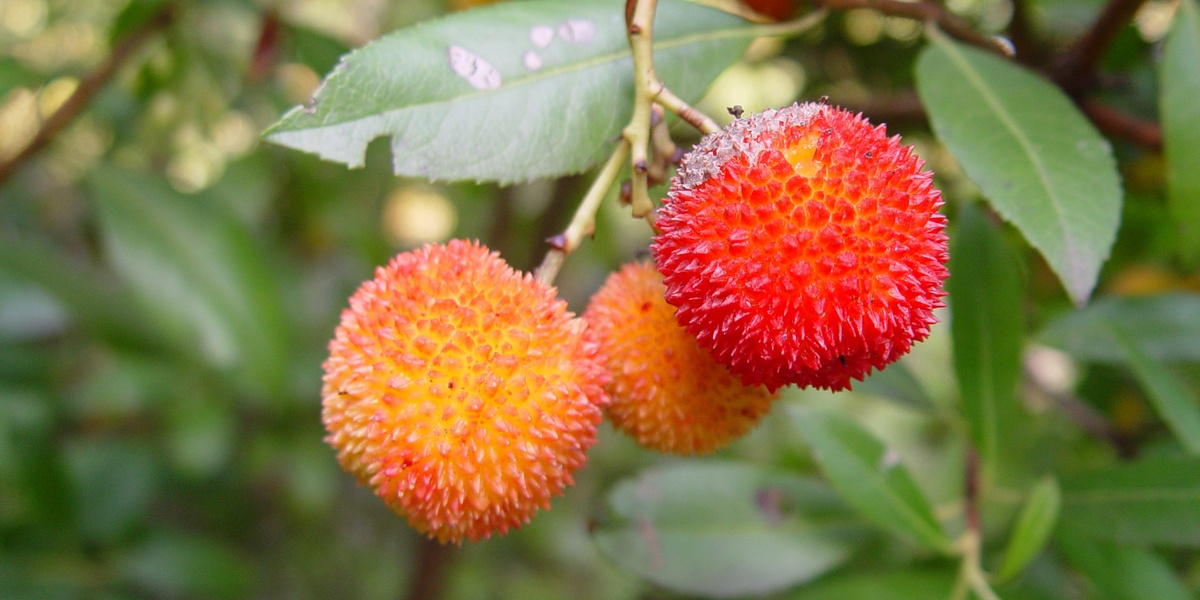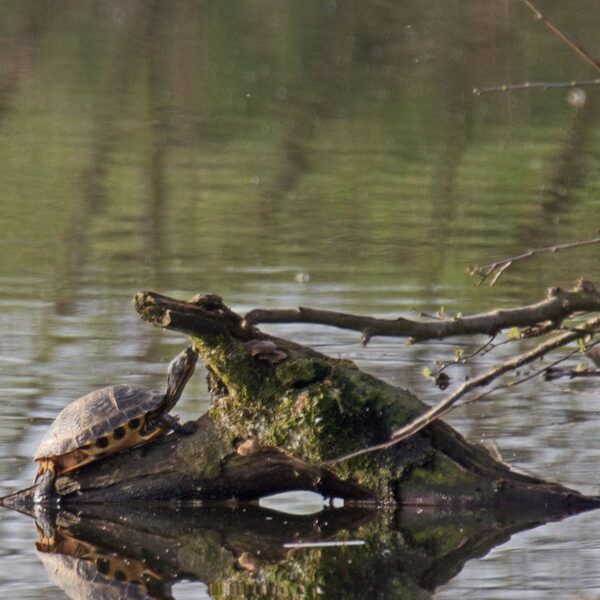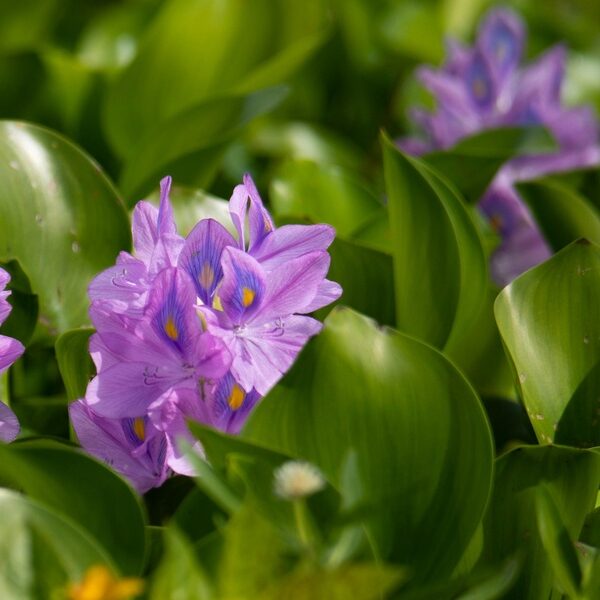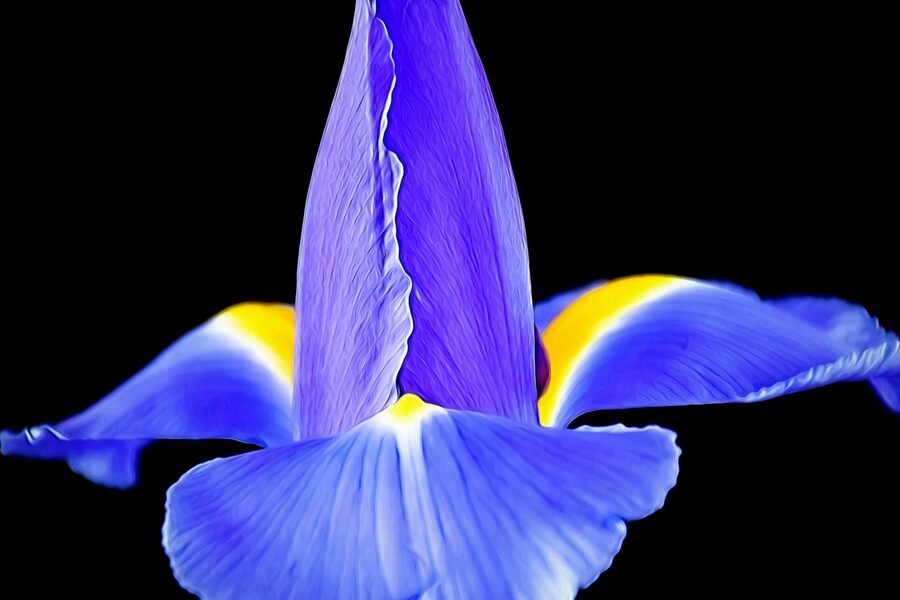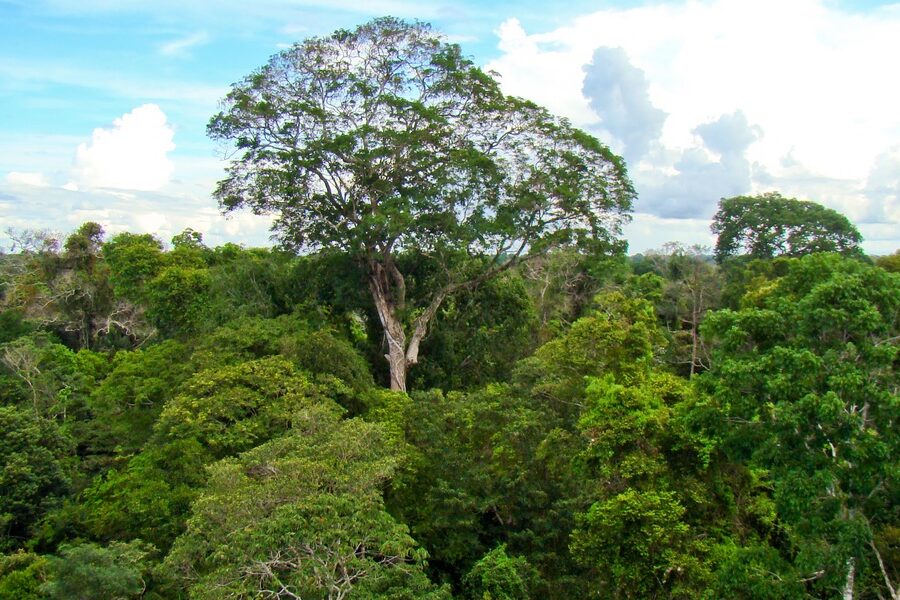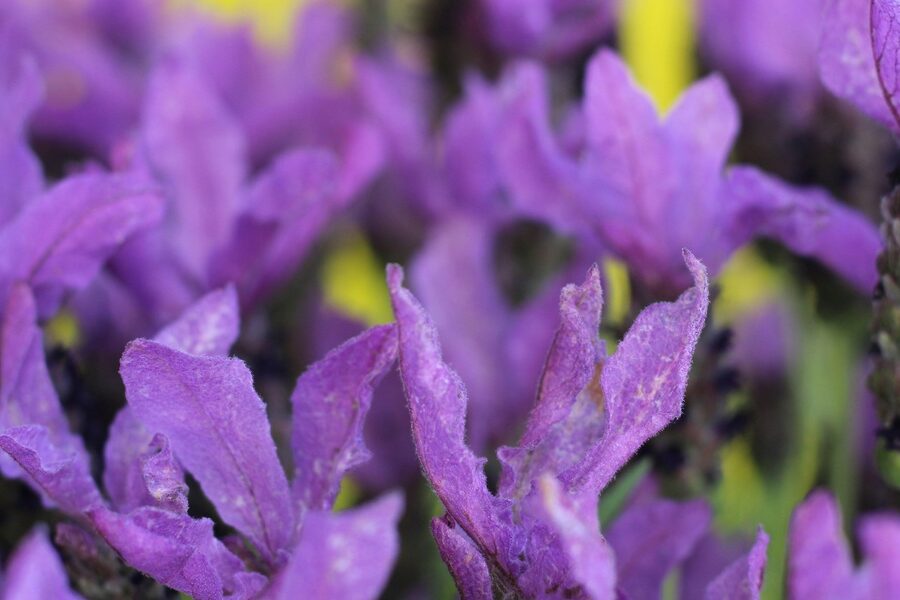Wandering through woodlands can be a delightful experience, full of natural beauty and unexpected discoveries. From towering trees to delicate undergrowth, forests hold a vast array of plant life, and for many, the sight of berries growing wild is a particular highlight.
To help you identify these natural treasures, we’ve put together a comprehensive list. Below, you’ll find details on exactly 32 forest berries, covering a broad spectrum from the common Bearberry to the less known Yew. Each entry includes important information such as its Scientific Name, Edibility, and Typical Habitat, all laid out clearly for you.
Are all forest berries safe to eat?
No, absolutely not. It’s crucial to understand that many wild berries are toxic and can cause serious illness or worse if ingested. Never eat a berry unless you are 100% certain of its identification and edibility. When in doubt, it’s always best to err on the side of caution and simply admire them in their natural habitat rather than consuming them.
Forest Berries
| Common Name | Scientific Name | Edibility | Typical Habitat |
|---|---|---|---|
| Highbush blueberry | Vaccinium corymbosum | Edible | Acidic woodlands and forest edges in eastern North America |
| Lowbush blueberry | Vaccinium angustifolium | Edible | Boreal and temperate forest floors, open woodland clearings |
| Bilberry | Vaccinium myrtillus | Edible | Acidic, shaded woodlands in Europe and parts of Asia |
| Huckleberry | Gaylussacia baccata | Edible | Mixed deciduous and coniferous forests, woodland clearings (eastern North America) |
| Red huckleberry | Vaccinium parvifolium | Edible | Moist coastal forests of the Pacific Northwest |
| Lingonberry | Vaccinium vitis-idaea | Edible | Boreal pine forests, heath and taiga, northern temperate woodlands |
| Crowberry | Empetrum nigrum | Edible | Boreal and alpine woodlands, acidic forest understories and edges |
| Bearberry | Arctostaphylos uva-ursi | Edible | Dry pine and coniferous forests, sandy woodland soils in boreal regions |
| Salal | Gaultheria shallon | Edible | Coastal temperate rainforests and shady woodland slopes (Pacific Northwest) |
| Thimbleberry | Rubus parviflorus | Edible | Moist forest edges, clearings and riparian woods in western North America |
| Salmonberry | Rubus spectabilis | Edible | Riparian and coastal forests of the Pacific Northwest |
| Serviceberry | Amelanchier alnifolia | Edible | Woodland edges, open forests and clearings across temperate regions |
| Elderberry | Sambucus nigra | Edible (cooked) | Woodland edges, moist woods and hedgerows in temperate zones |
| Chokeberry (black chokeberry) | Aronia melanocarpa | Edible | Wet woods, forest margins and damp clearings in North America |
| Oregon grape | Mahonia aquifolium | Edible | Shaded coniferous forests and understories in the Pacific Northwest |
| Juniper | Juniperus communis | Edible (used as spice) | Dry woodland margins and rocky forest slopes across the northern hemisphere |
| Yew | Taxus baccata | Toxic | Mixed and coniferous forests, shaded woodland areas in temperate regions |
| Red baneberry | Actaea rubra | Toxic | Moist deciduous forests and shaded woodland understory in North America |
| White baneberry (doll’s eyes) | Actaea pachypoda | Toxic | Rich hardwood forests and shaded understories in eastern North America |
| Pokeweed | Phytolacca americana | Toxic | Disturbed woodlands, forest edges and clearings in eastern North America |
| Spindle | Euonymus europaeus | Toxic | Deciduous woodlands and hedgerows across Europe, shady forest margins |
| Rowan (mountain ash) | Sorbus aucuparia | Edible (cooked/processed) | Cool temperate woodlands and montane forests in Europe and Asia |
| Wild grape | Vitis riparia | Edible | Woodland edges, riparian forests and shaded thickets across North America |
| Nannyberry | Viburnum lentago | Edible (tart/raw or cooked) | Moist woodlands and wet forest edges in North America |
| Highbush cranberry | Viburnum opulus | Edible (cooked) | Moist woodlands, hedgerows and forest margins in Europe and North America |
| Common barberry | Berberis vulgaris | Edible (tart, used sparingly) | Woodland edges, hedgerows and shady thickets in Eurasia |
| Common buckthorn | Rhamnus cathartica | Toxic | Deciduous woodlands and shaded forest understory in Europe and introduced North America |
| Bunchberry | Cornus canadensis | Edible | Boreal and cool temperate forest floors, mossy shaded woodlands |
| Woodland strawberry | Fragaria vesca | Edible | Open forest floors, light woodlands and clearings across temperate regions |
| Black huckleberry | Vaccinium membranaceum | Edible | Montane coniferous forests and subalpine clearings in western North America |
| Greenbrier berries | Smilax rotundifolia | Toxic/inedible | Shaded deciduous forests, thickets and vine tangles in eastern North America |
| Wintergreen (teaberry) | Gaultheria procumbens | Edible | Cool, shady coniferous and mixed forest floors in northern temperate regions |
Images and Descriptions
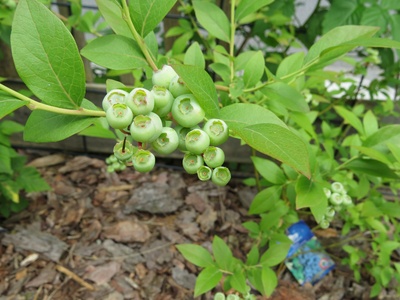
Highbush blueberry
Plump dark-blue berries on low shrubs, sweet to mildly tart. Found on acidic forest floors and edges, popular for fresh eating and preserves. Look for clusters under pine and mixed hardwood canopies.
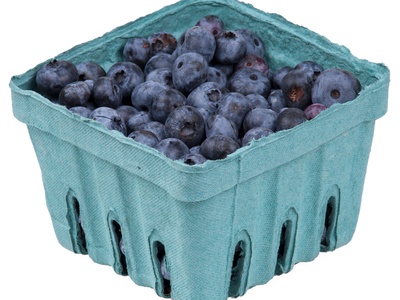
Lowbush blueberry
Small, firm blue-black berries on low mat-forming shrubs. Intensely flavored and sweet, common in understories of pine and mixed forests. Often harvested wild for jams and desserts.

Bilberry
Dark purple, almost black berries on low shrubs, intensely flavored and tart-sweet. Grows on mossy forest floors and in clearings. Popular in jams, pies and traditional medicine.
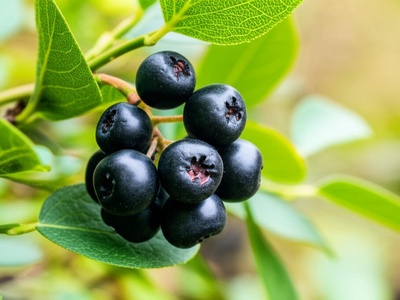
Huckleberry
Round, red-to-black berries with glossy skins. Sweet-tart flavor similar to blueberries. Grows on acidic forest soils and shady understories; prized by wildlife and foragers.
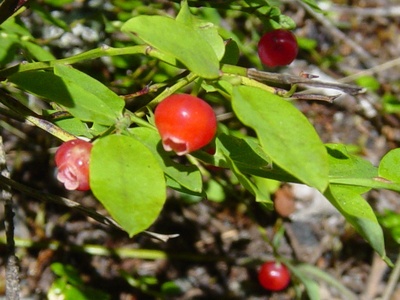
Red huckleberry
Bright red, translucent berries on small shrubs, pleasantly tart and juicy. Common in damp, shady forest understories and streamside thickets; eaten fresh or made into preserves.
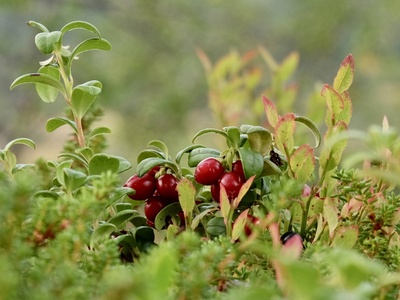
Lingonberry
Small red berries, very tart and firm. Grows on acidic forest floors and mossy sites beneath conifers. Often cooked into sauces, preserves, or eaten with savory dishes.
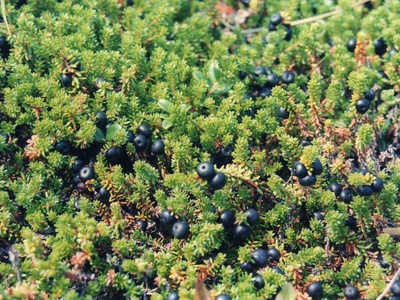
Crowberry
Low-growing evergreen shrub with small black berries; flavor is bland to mildly tart. Found in northern forests and high-elevation woodlands. Eaten raw or mixed with sweeter fruits.
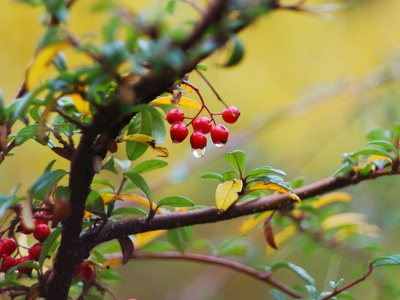
Bearberry
Low evergreen groundcover with small red berries that are mealy and astringent. Common in dry, sunlit patches of boreal and mixed woodlands; used medicinally and as emergency food.
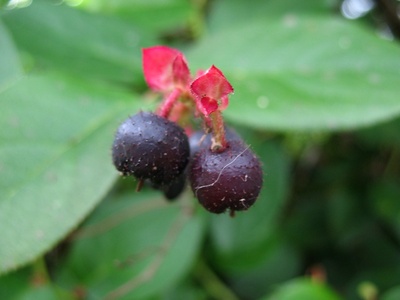
Salal
Dark, thick-skinned berries on evergreen shrubs; sweet and slightly astringent. Abundant in shady coastal forests, used fresh or in jams and baked goods.
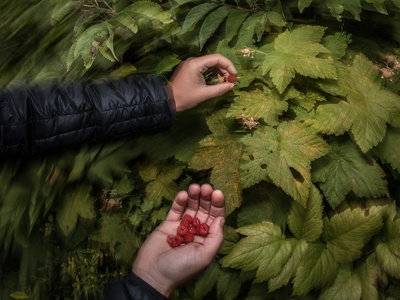
Thimbleberry
Soft, red raspberry-like fruit with a fleeting shape, intensely aromatic and sweet. Grows on canes in shady forest openings; delicate and best eaten fresh.
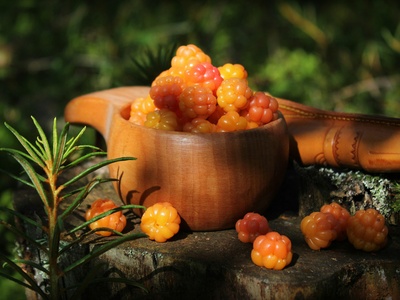
Salmonberry
Large orange-to-red raspberry-like berries, variable flavor from bland to sweet. Common in moist woodland thickets and stream banks; often one of the first berries of the season.
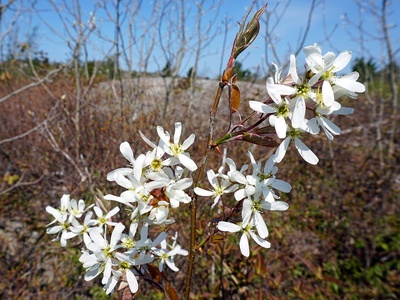
Serviceberry
Small round purple berries with sweet, almond-like flavor. Grow on small trees and shrubs in open woods and forest margins; excellent eaten fresh or baked into pies and preserves.

Elderberry
Clusters of dark purple-black berries on shrubs. Raw berries and other plant parts are mildly toxic; fully ripe berries must be cooked for safe eating. Widely used in syrups, jams and wines.
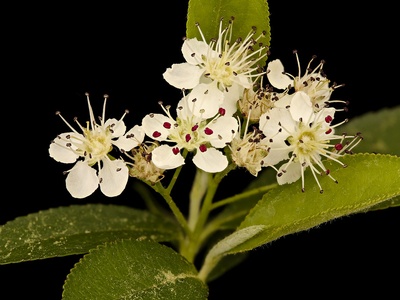
Chokeberry (black chokeberry)
Glossy black clusters, very astringent and tart raw but rich in antioxidants. Grows in moist woodland conditions; typically cooked with sugar into jellies or juices.
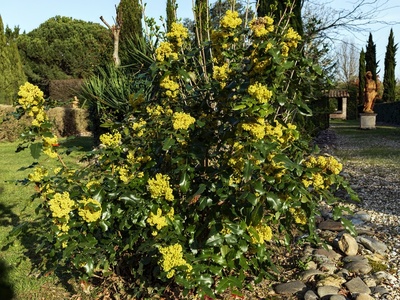
Oregon grape
Clusters of small blue-black berries, tart and quite acidic. Found on evergreen shrubs beneath conifers; used in jams, jellies and traditional remedies after sweetening.
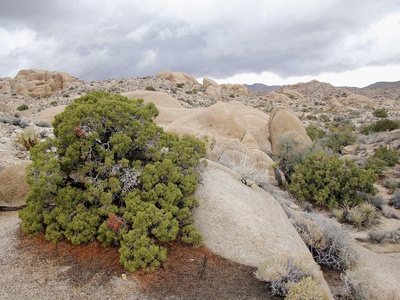
Juniper
Conifer “berries” are fleshy, blue reproductive cones with resinous, piney flavor. Used sparingly as a spice (not a snack). Common on well-drained forest slopes and open woodlands.
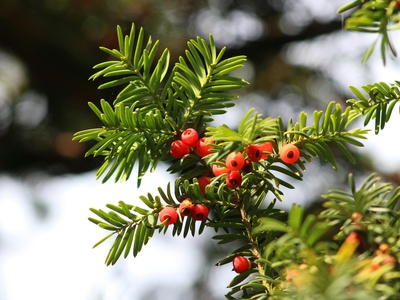
Yew
Glossy red arils surround a highly poisonous seed; the fleshy aril can look tempting but entire plant is toxic if seeds are crushed or swallowed. Widely present in shaded woods.
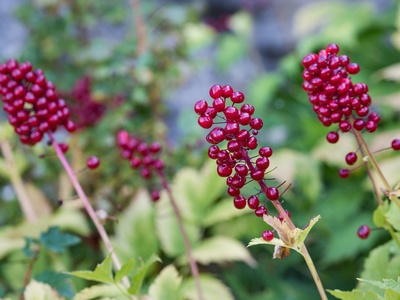
Red baneberry
Showy red berries on slender stalks in clumps. Highly toxic to humans and pets; causes cardiac and gastrointestinal symptoms if ingested. Common in rich, damp woods.

White baneberry (doll’s eyes)
White berries with a black dot on each resemble “doll’s eyes.” Very poisonous; avoid. Found on cool, moist forest floors under hardwood canopies.
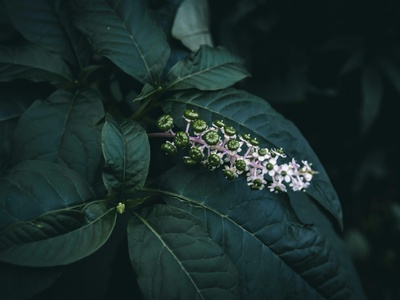
Pokeweed
Clusters of glossy purple-black berries on tall herbaceous stalks. Historically used medicinally but berries and plant are toxic—ingestion can cause severe symptoms.
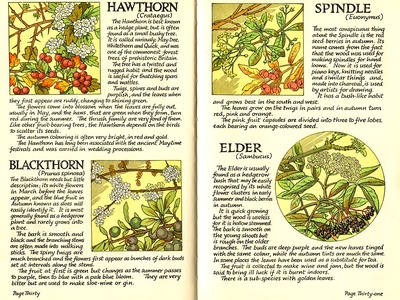
Spindle
Bright pink capsules split to reveal orange seeds. Attractive but poisonous, causing vomiting and dizziness. Common in temperate woodlands and edge habitats.
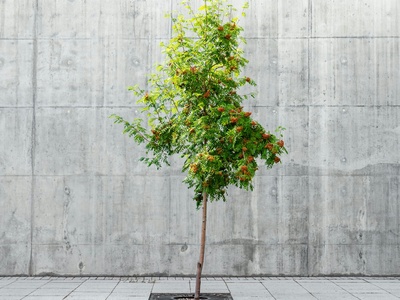
Rowan (mountain ash)
Clusters of bright orange-red berries with sharp, astringent flavor raw. Widely planted and naturally occuring in woodlands; cooked into jellies, jams and fermented drinks to reduce bitterness.
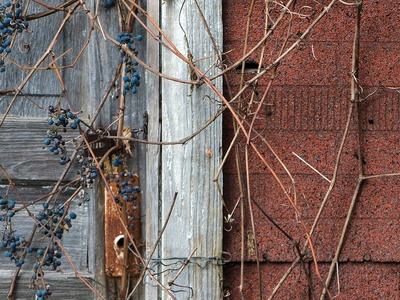
Wild grape
Small dark grapes on vigorous vines climbing trees in shaded forests and river corridors. Tart to sweet, used for fresh eating, juice and wild winemaking.
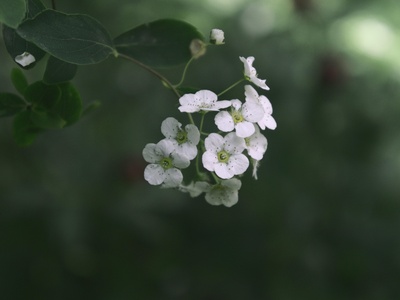
Nannyberry
Small dark blue-black drupes on shrubs, tart raw and improved by cooking. Common in moist, sheltered woodland margins and used historically for preserves and fermented beverages.
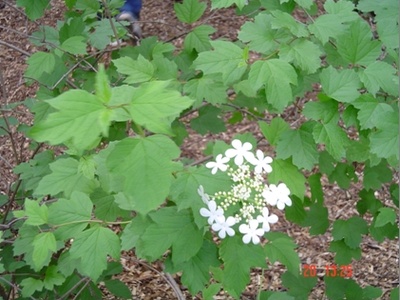
Highbush cranberry
Bright red clusters of tart fruits that are astringent raw but good cooked into sauces and preserves. Grows in damp woodland edges and shady thickets.
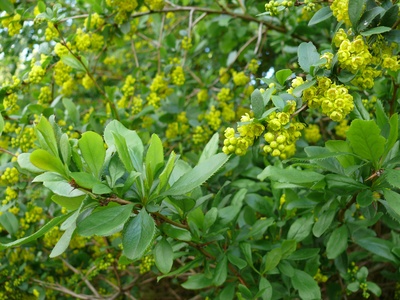
Common barberry
Oblong red berries are very tart and acidic, used sparingly in cooking. Thorny shrubs prefer light woodland margins and scrubby forest patches; seeds are numerous inside berries.
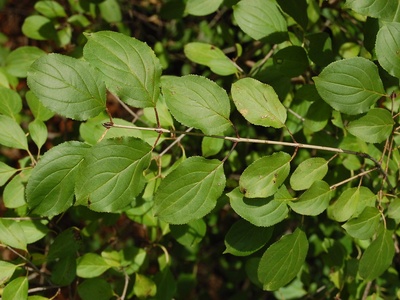
Common buckthorn
Clusters of dark berries are laxative and can be poisonous in quantity. Frequently invade forest understories and edges, where birds disperse seeds widely.
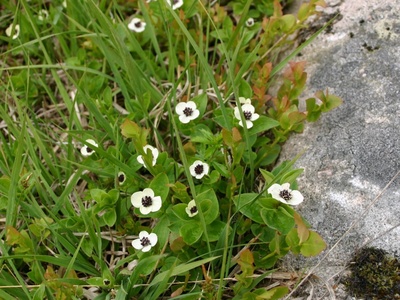
Bunchberry
Low groundcover dogwood with clusters of bright red berries. Mildly sweet but seedy; eaten raw or cooked. Common in cool, mossy coniferous and mixed forests.
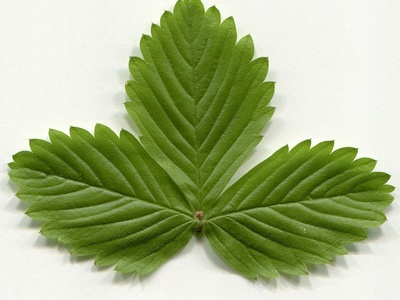
Woodland strawberry
Delicate, sweet red fruits from low creeping plants in light woods. Wild woodland strawberries are intensely flavored, small, and found in sunlit patches of the forest floor.
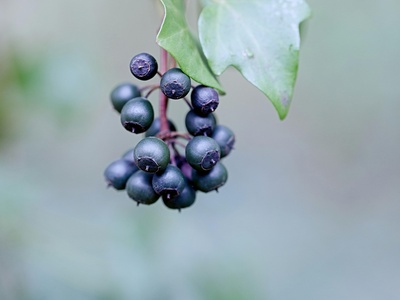
Black huckleberry
Large, dark purple berries on shrubs in mountain forests. Sweet and aromatic when ripe, popular with wildlife and foragers. Found in clearings and understories of fir and pine forests.
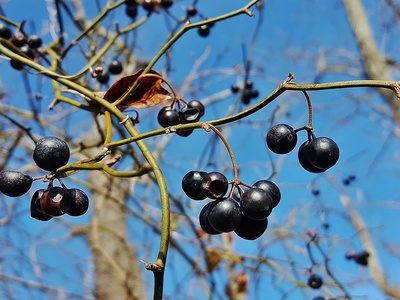
Greenbrier berries
Clusters of dark blue-black berries on thorny vine tangles in shaded woods. Not palatable and can cause digestive upset; mainly eaten by birds, not humans.
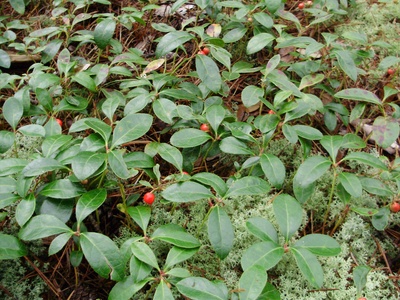
Wintergreen (teaberry)
Low evergreen with shiny red berries that have a minty, wintergreen flavor. Common on mossy forest floors; used as flavoring and eaten fresh in small amounts.
